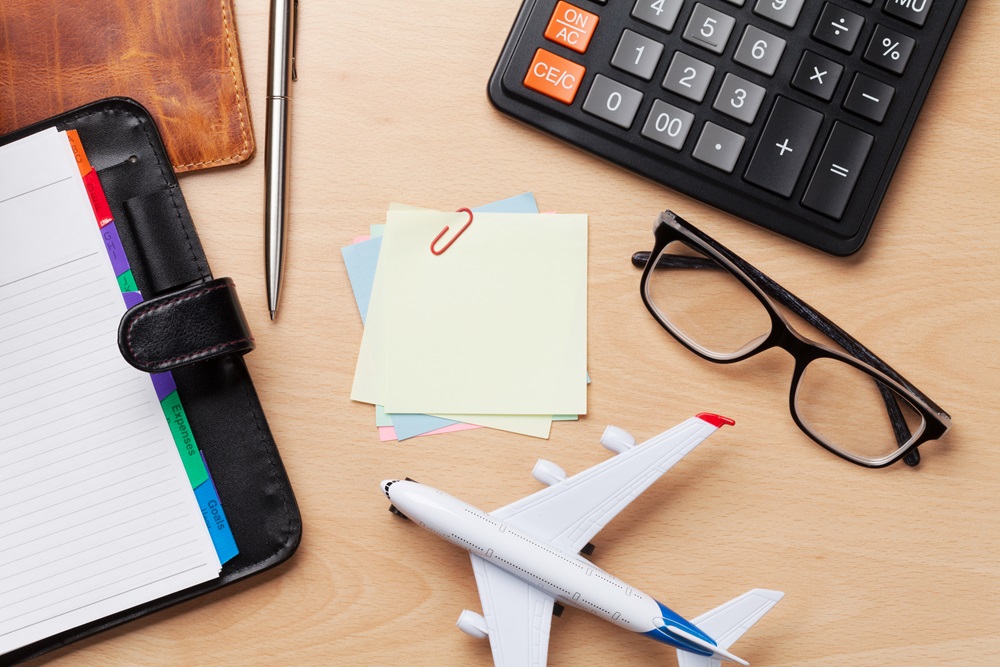Small and medium-sized enterprises are always looking for ways to maximize their expenses, and especially when it comes to travel costs, it’s important to keep a close eye on them as travel expenses can easily get out of hand if you don’t have a strict travel policy to help you monitor expenses.
This article will line out 10 ways your business can cut travel expenses without negatively impacting productivity. Productivity, in relation to business travel, can be measured by assessing the outcomes of the trip (such as deals closed, partnerships formed, or insights gained) against the costs incurred. The more efficiently a business (or an individual) can achieve its (or their) travel objectives while minimizing expenses, the higher the travel productivity.
Business travel cost savings – 10 helpful hints for SMEs
Check out these 10 helpful hints SMEs can leverage to optimize business travel cost savings and ensure travelers stay productive and happy while traveling.
1. Utilize technology
Leveraging technology is at the core of business travel cost savings. Why? Because by using technology like a travel management platform like GetGoing you can manage expenses in a more streamlined manner because costs and travel management can be done in one place. Travelers can easily book their trips and choose from the best fares thanks to negotiated rates, and finance teams can easily manage and keep track of travel costs, unlocking opportunities for savings.
Technology can also be used in the way of video conferencing, using tools like Zoom, Microsoft Teams or Google Meets to reduce the need to travel by replacing a business trip with conference calls.
2. Plan ahead
Book flights and accommodations in advance to be sure to take advantage of better prices by booking ahead of time. Planning ahead of time also helps ensure you can spread the work of trip management over a period of time so that no one gets overwhelmed or has to take time away from revenue-generating tasks. Planning ahead ensures your finance department is ready for whatever comes its way in terms of budgeting and costs.
3. Make sure you have a robust travel policy
There is nothing like a travel policy to ensure your company and your employees are set up to make cost-effective choices. Whether that be economy-class flights or choosing budget-friendly hotels, a travel policy will lay out clearly standards and guidelines set forth for controlling your budget and keeping your employees on track. This will also keep teams more productive because there will be less back and forth about what’s allowed and what’s not.
Pro Tip: Work with a travel management platform that allows you to automate your travel policy. It’s easier for travelers and office admins to know the different travel rules and limitations and for finance teams, it’s easier to ensure the whole team stays on budget.

Don’t have a travel policy yet? Get our helpful guide.
4. Combine trips
Scheduling multiple trips or visits is one of the best ways to get the most value out of travel, and as an added bonus, it is also better for the environment. Taking one flight instead of one flight after the next, helps save on your CO2 emissions as well as your travelers’ general state of being. One slightly longer trip is better than having to constantly interrupt your life and routine to go on a business trip. It also means less time away from the office, which means overall more productivity.
5. Prioritize direct flights
Non-stop flights are the way to go for productive flights. Less interruptions mean more work is done on the plane, and time spent traveling is maximized. Plus, less time in the air, means more time establishing a rapport with clients, which ultimately leads to better results. While direct flights aren’t always the cheapest option, they are without a doubt the most productive and efficient. Sometimes it’s about choosing a sweet spot between profitability and productivity.
6. Work with a provider that has negotiated rates
Having negotiated corporate rates is not always easy. It’s important to establish partnerships with a travel management platform that works with airlines, hotels and car rental companies to negotiate corporate rates that may otherwise be unavailable to SMEs.
7. Promote use of public transport and ride share
Part of organizing a corporate trip involves coordinating all the moving parts and the moving people. If more than one person is traveling for business, consider setting up ride share with one of the popular ride share apps, a taxi or rental car. Another great idea is using public transportation. Not only is it better for the environment, but it’s also more affordable. Plus, this time spent traveling and sharing experiences amongst colleagues is great for the team morale.
8. Per diem allowances
Per diem allowances can be configured into your travel policy to have the most control. Setting daily allowances for meals and other expenses helps manage costs and ensure greater levels of budget management.
By setting up accommodation and meal expenses per trip, you can be sure to stay on budget, and set up transparency for travelers who know what they’re entitled to spend per trip.
9. Flexible travel dates
Before setting up meetings, take a look at travel fares and choose dates that have lower fares, generally speaking away from important holidays like Spring Break, Winter Break and other national holidays or important festivities.
Weaving flexibility into your business travel calendar also means your travelers will be more productive because they can choose when to travel based on their work calendar, and they won’t be overwhelmed having to travel when they have key deadlines. They will also be able to manage their time better, keeping important deadlines away from travel dates.
10. Review and refine your budget regularly
By working with a travel management platform, you can get real-time insights into your travel spend, getting an understanding if your forecasting is accurate and optimizing accordingly. By optimizing regularly you can identify areas where you can unlock further savings and opportunities before it’s too late and you’ve gone beyond your budget. This is without a doubt a more productive and more streamlined way of managing expenses.
Key takeaways to optimizing travel costs while staying productive
We’ve looked at the ways SMEs can optimize travel costs and maintain productivity. Utilizing technology, planning ahead, implementing a robust travel policy, combining trips, prioritizing direct flights, working with providers with negotiated rates, promoting the use of public transport and ride-sharing, encouraging virtual meetings, considering alternative accommodations, and tracking and analyzing travel data are all ways to cut costs without cutting into productivity.
By implementing these strategies, SMEs can save money on business travel without sacrificing efficiency, allowing them to allocate more resources to other areas of their business.
Want to find more ways to unlock travel savings? Learn more about how GetGoing can help you.



